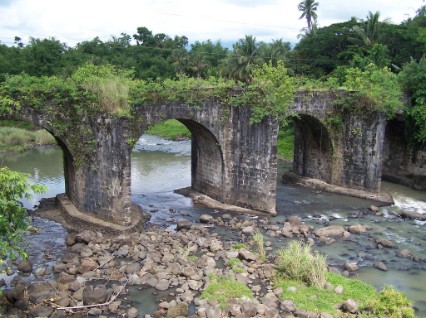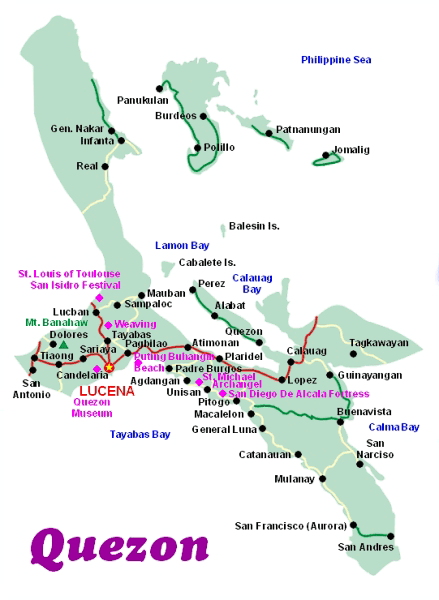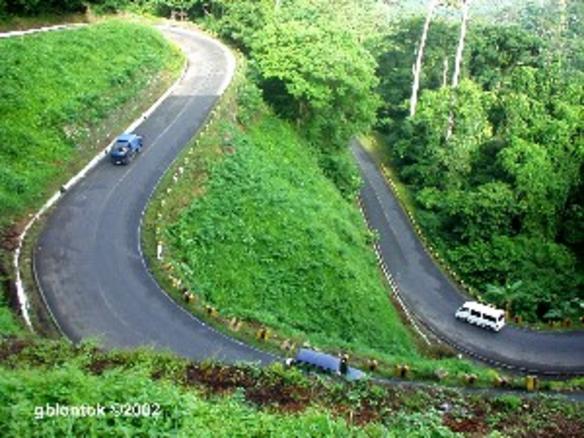Message of the Provincial Director THE DUTY THAT WE HAVE AS MEMBERS OF THE PHILIPPINE NATIONAL POLICE IS A NEVER ENDING ENDEAVOR OF PROVIDING QUALITY LAW ENFORCEMENT SERVICES FOR THE FILIPINO PEOPLE AND ADHERING TO THE HIGHEST STANDARDS OF DISCIPLINE AND LOVE OF COUNTRY. NEVER RESTING ON OUR LAURELS AND GIVING ALL OUR HEART IN THE SERVICE OF OUR FELLOWMEN IS THE EPITOME OF WHAT THE POLICE SERVICE IS ALL ABOUT. MABUHAY! |
||
QUEZON POLICE PROVINCIAL OFFICE Quezon Police Provincial Office is located in Camp Guillermo Nakar, Lucena City inside the AFP military camp within Lucena City proper and almost 128kms away from Manila. It is comprises of one (1) City Police Station, forty (40) Municipal Police Stations and one (1) Quezon Provincial Public Safety Company (QPPSC). The 40 police stations is situated along Maharlika highway, Bondoc Peninsula, Polilio group of islands, Northern Quezon and Central Quezon, and has a strength of eighty nine (89) Police Commission Officers (PCO) and One Thousand Three Hundred Sixty (1,360) Police Non-Commission Officers (PNCO) for a total of One Thousand Four Hundred Forty Nine (1,449). At present, Quezon Police Provincial Office is under the leadership of PSSUPT ERICSON TALAVERA VELASQUEZ (DSC), Provincial Director. FACTS AND FIGURES OF QUEZON PROVINCE
BRIEF HISTORY The Province formerly known as Tayabas, was explored by the Spaniards in 1571 led by Juan de Salcedo. During their exploration they passed through the central portion of Tayabas in his march across Laguna Province to Paracale. The following years, Salcedo led his famous expeditions around the northern coast of Luzon and has visited the towns of Casiguran, Baler and Infanta. In 1574, Father Diego de Oropesa who found a group of natives with their own culture and government, founded the municipality of Gumaca, then called Bumaka. The territory which now constitutes the province of Tayabas was at one time under the jurisdiction of various provinces. In 1585 the southern and central portions, were under the jurisdiction of the province of Bonbon, sometimes called Balayan (now Batangas). The northern portion on the other hand was divided between Laguna and Nueva Ecija, while the other portion was divided into the provinces of Mindoro, Marinduque and Camarines. In 1591, Tayabas was created into a province under the name of Kalilayan. Its capital was the ancient town of Tayabas, now a barrio in the town of Unisan where ancient tombs and artifacts can be found. However, by the middle of the ancient century the provincial capital was moved to what is now the municipality of Tayabas. The year 1595 marked the spiritual birth of Quezon Province with its incorporation into the Diocese of Nueva Caceres. The first Catholic Bishop of the Province was Fray Francisco Ortega, an Augustinian Friar, while its Alcalde Mayor was Don Semion Alvarez, who served from 1625 to 1655. In September 7, 1946, President Manuel A. Roxas, by virtue of Republic Act Number 14, renamed the province to Quezon in honor of the late President Manuel A Quezon, the most illustrious son of Baler, formerly part of Quezon.
LOCATION Quezon Province is the second largest in size in Southern Tagalog and sixth largest province in the Philippines. It has boundaries extending as far as the province of Aurora in the North and Camarines Sur in the South. It is bounded on the north by the province of Aurora, on the west by the province of Laguna and Rizal, on the south-west by the province of Batangas and on the south-east by the province of Camarines Norte and Camarines Sur. Tiaong is the first town via the Manila South Road about 89 kilometers from Metro Manila, while Lucena City the province’s capital is about 137 kilometers by road and 183 kilometers by railroad.
LAND AREA The land area of Quezon province is about 870,660 hectares. POLITICAL SUBDIVISION The province has 40 municipalities which are divided into four (4) political districts and one (1) urbanized city, the City of Lucena. It has 1,233 barangays with Lopez having the most number of barangays with ninety-five (95) while Jomalig has only five (5) and Patnanungan with only six (6) barangays.
TOPOGRAPHY The Sierra Madre runs along the entire length of the province with Mount Banahaw, an active volcano, towering about 7,382 feet above sea level as the most prominent peak of the range. Other mountain peaks within the range from 1,500 to 6,000 feet above sea level can be found in the Bondoc Peninsula with Polilio Island, Jomalig and Alabat Island with an altitude of about 1,000 feet.
COASTAL AND MARINE ENVIRONMENT There are five (5) important coastal and marine resources in the province, which are classified according to their economic uses: mangroves, sea grasses, coral reefs, municipal fisheries and commercial fisheries.
INDUSTRY The industry sector is composed of mining and quarrying, manufacturing, construction and electricity, gas and water. Except for manufacturing, all this sub-sectors are evidently growing in magnitude but reliable information on their actual distribution, type, value added and volume of employment generated to date are not available. Sand and gravel are mined in small scales in various places with a large concentration in the municipalities of Sariaya, Tiaong, Dolores and Candelaria in District II; Sampaloc, Mauban, Pagbilao, and Gen Nakar in District I; and Plaridel and Tagkawayan in District IV. In the period 1993 to 1997, 465 quarry and mining permits were issued with allowable harvesting volume ranging from 1,000 cubic meters to 120,000 cubic meters.
POPULATION The present population of Quezon Province is estimated at 1,948,927 for CY 2009, majority of whom are native Tagalogs.
POLICE TO POPULATION RATIO The police to population ratio of Quezon province is 1: 1369 |

     |
|